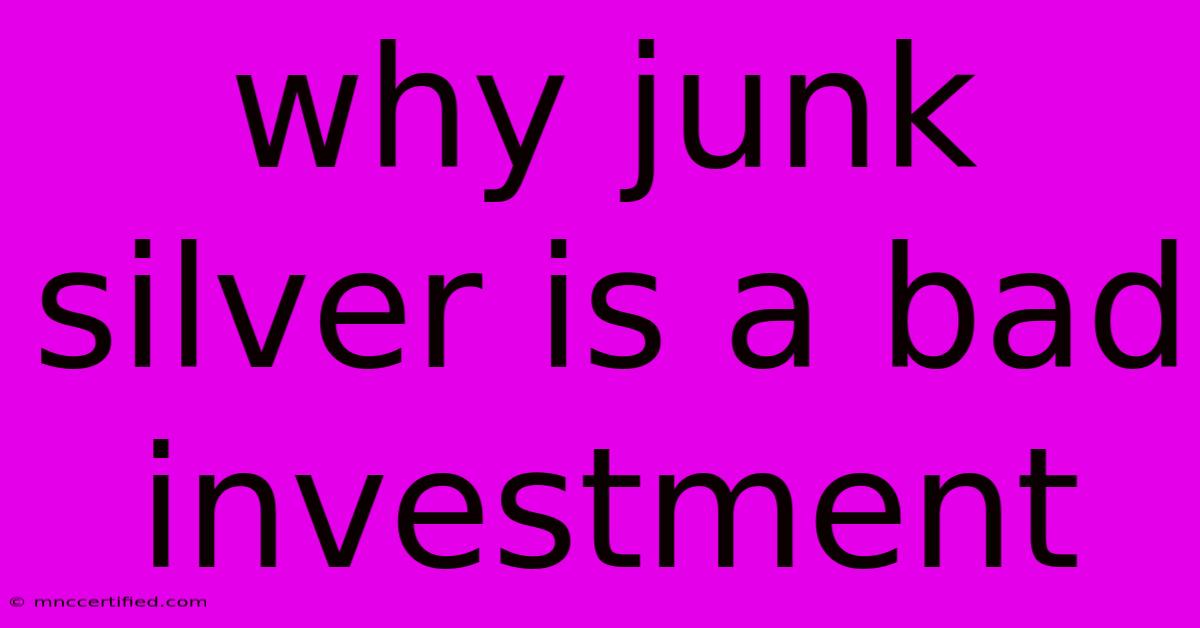Why Junk Silver Is A Bad Investment

Table of Contents
Why Junk Silver Is a Bad Investment: A Look at the Facts
The allure of "junk silver" – coins with silver content but less than face value – is undeniable. The idea of owning a tangible asset that can potentially rise in value is tempting. However, before diving into the world of junk silver, it's crucial to understand why, for most investors, it's a bad investment.
Understanding the "Junk" in Junk Silver
"Junk silver" typically refers to US silver coins minted before 1965. These coins, including pre-1965 dimes, quarters, half dollars, and dollars, were made of 90% silver. After 1965, the composition of US coinage shifted to a copper-nickel alloy, leaving the older silver coins as the only readily available source of bullion silver for many collectors.
The Illusion of Value: A Closer Look
While the silver content of junk silver coins does have intrinsic value, the "numismatic value" – the value derived from their historical significance or rarity – often overshadows the silver value. This creates a misleading perception of potential gains.
Here's why relying solely on silver content for profit can be a mistake:
- Fluctuating Silver Prices: Silver prices are volatile. While they can rise, they can also fall significantly, eroding your investment.
- High Premiums: Junk silver is usually bought and sold at a significant premium above the spot price of silver. This premium can eat into your potential profits, especially if silver prices stagnate or drop.
- Limited Market: Selling junk silver can be challenging. Finding a buyer willing to pay a fair price, especially for common coins, can be difficult.
- Storage Costs: Storing a large quantity of silver coins can be expensive due to the need for secure storage.
The Reality: Alternatives Offer More Value
Instead of investing in junk silver, consider these alternatives:
- Silver ETFs: These ETFs track the price of silver, offering a more convenient and liquid way to invest.
- Silver Mining Stocks: Investing in silver mining companies allows you to capitalize on the potential growth of the industry.
- Precious Metal Funds: These diversified funds provide exposure to a variety of precious metals, mitigating risk.
The Bottom Line: Don't Fall for the "Junk Silver" Myth
While the idea of owning silver coins might be tempting, it's crucial to understand the realities of the market. Junk silver is often a poor investment for the average individual due to fluctuating silver prices, high premiums, limited liquidity, and storage costs.
Consider alternative investment options that offer greater flexibility, transparency, and potential for growth.

Thank you for visiting our website wich cover about Why Junk Silver Is A Bad Investment. We hope the information provided has been useful to you. Feel free to contact us if you have any questions or need further assistance. See you next time and dont miss to bookmark.
Featured Posts
-
How Much Does A Chest X Ray Cost With Insurance
Nov 14, 2024
-
British Actor Timothy West Passes Away
Nov 14, 2024
-
Timothy West A Life Through Photos
Nov 14, 2024
-
Home Insurance Panama City Beach Fl
Nov 14, 2024
-
Mountain Laurel Insurance Tennessee
Nov 14, 2024